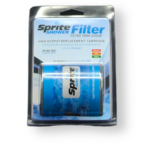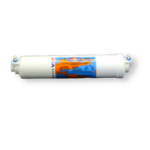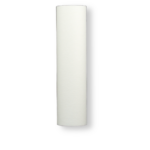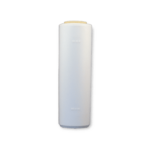Reverse Osmosis
Reverse osmosis (RO) is the most effective way to remove certain unwanted contaminants including Fluoride, Mercury, in fact, all minerals, heavy metals, all chemicals and bacteria from your drinking water. Normal household water pressure forces water through the membrane.
The membrane rejects most of the dissolved substances in the water and allows only purified water to pass through. The purified water then enters a storage container and the rejected water goes down the drain as waste.
Reverse Osmosis consists of several different stages to remove sediment, chemicals including Chlorine and other contaminants, the reverse osmosis membrane, a storage container for the pure water and a post carbon post filter.
We are often asked about expanding this basic filtration to a 5 – 6 or even 7-stage systems, including 2 carbon filters, which is simply not required and only increases your yearly cartridge change.
We recommend a 4-stage unit, incorporating a sediment pre-filter, carbon pre-filter, membrane and a post-filter. Any additional stages should be for the addition of minerals and alkalinity to the pure water to ensure energised and remineralised water. For more information on this go to
Unfortunately, Reverse Osmosis cannot be used to treat all the water entering your home for the following reasons.
- Waste to pure water ratio. To eliminate filtered contaminants wastewater is produced in the filtration process. All Puregold Reverse osmosis use 300 litres/day membranes, with a waste component of 1 litre of pure water to 1.5 litres of waste water.
- Slow Production. Puregold incorporate USA made Dow Filmtec Membranes in all portable and undersink units. At 300 litres a day, 10 – 12 litres a day or 1 litre every 4 minutes, a storage containers is required. All undersink reverse osmosis come complete with a stainless steel storage tank, portable units require either a container, either glass bottles or a larger container.
|
Substance
|
% Rejection
|
Substance
|
% Rejection
|
| Aluminium | 96 – 98 | Fluoride | 96 – 98 |
| Sodium | 92 – 98 | Bromide | 90 – 95 |
| Magnesium | 93-98 | Cyanide | 93-97 |
| Potassium | 92-96 | Sulfate | 96-99 |
| Calcium | 93-99 | Thiosulfate | 96-98 |
| Manganese | 96-98 | Silicate | 92-95 |
| Iron | 96-98 | Silica | 95-98 |
| Copper | 96-99 | Nitrate | 93-98 |
| Nickel | 96-99 | Polyphosphate | 96-98 |
| Cadmium | 93-97 | Orthophosphate | 96-98 |
| Silver | 93-96 | Chromate | 90-95 |
| Zinc | 97-99 | Bacteria | >99 |
| Mercury | 94-97 | Lead | 96-98 |
| Hardness | 93-97 | Arsenic | 90-98 |
| Radioactivity | 93-97 | Medications | 97-99 |
| Chloride | 92-98 | Chlorofoam | 71-90 |
| Ammonium | 85-90 | Tin (11) Sulfate | 83-87 |
| PCB’s | 97-99 | PBA’s | 96-98 |




